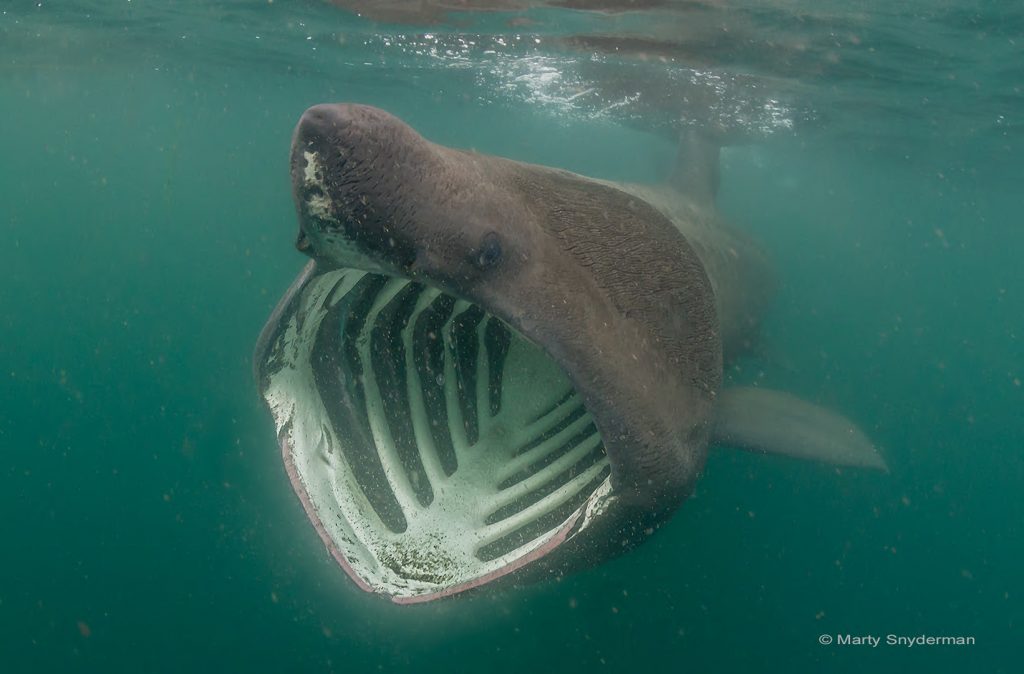
Photographing Mr. Big
By: Marty Snyderman
It is no small secret that compelling images of big marine animals have a special place in the hearts and minds of many underwater photographers. Acquiring those images is usually challenging, but the rewards, like this photograph of a manatee, often end up front and center when we share our work.
In this piece I am going to delve into some thoughts and techniques that help lead to success when photographing Mr. Big. But before discussing techniques, I want to be clear about the fact that big wild animals are exactly that- big and wild. It is paramount to respect their raw power, speed, and wild nature.
So, first and foremost, be smart and stay safe. If you don’t feel comfortable, don’t push your luck. No photograph is worth getting hurt for.
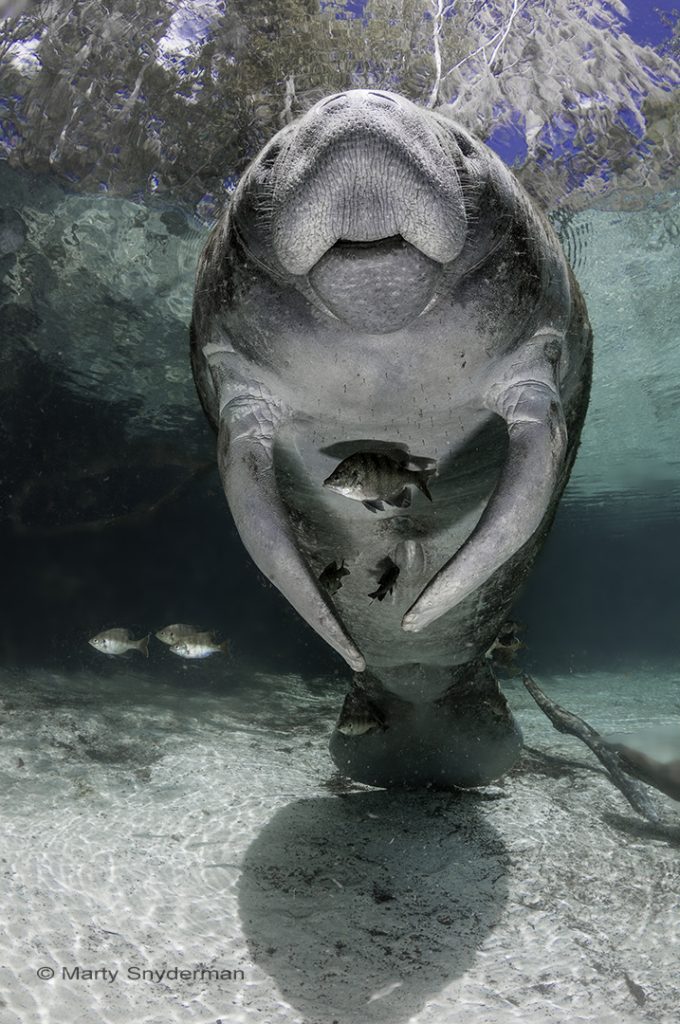
The above said, it is also true that as underwater shooters, there are a lot of scenarios in which we have wonderful opportunities to dive with and photograph Mr. Big. So, let’s explore some techniques and thoughts that can help lead to your photographic success.
Work in Shallow Water When You Can
Try to work in shallow water. While you can’t control where big animals will be, there are times when you have the option of working at or near the surface or diving down in pursuit of your subject. Given a choice, you are likely to have more light and more contrast between your subject and its surroundings if you can work in shallow water. Those factors often lead to more pleasing image quality as was the case when photographing this shortfin mako shark.
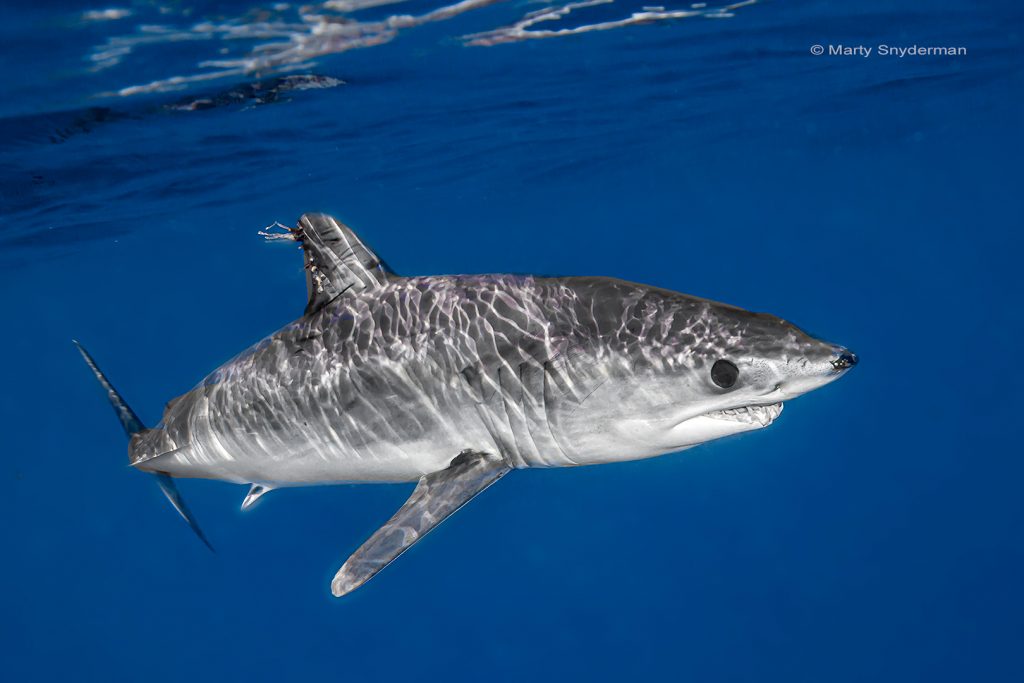
Several scenarios come to mind when thinking about trying to stay shallow. It is quite common for underwater photographers to swim after manta rays and in doing so “push” their desired subject into deeper, darker water. What happens is that your ability to see detail in your subject diminishes the deeper you go. Colors become muted and subjects blend into their surroundings.
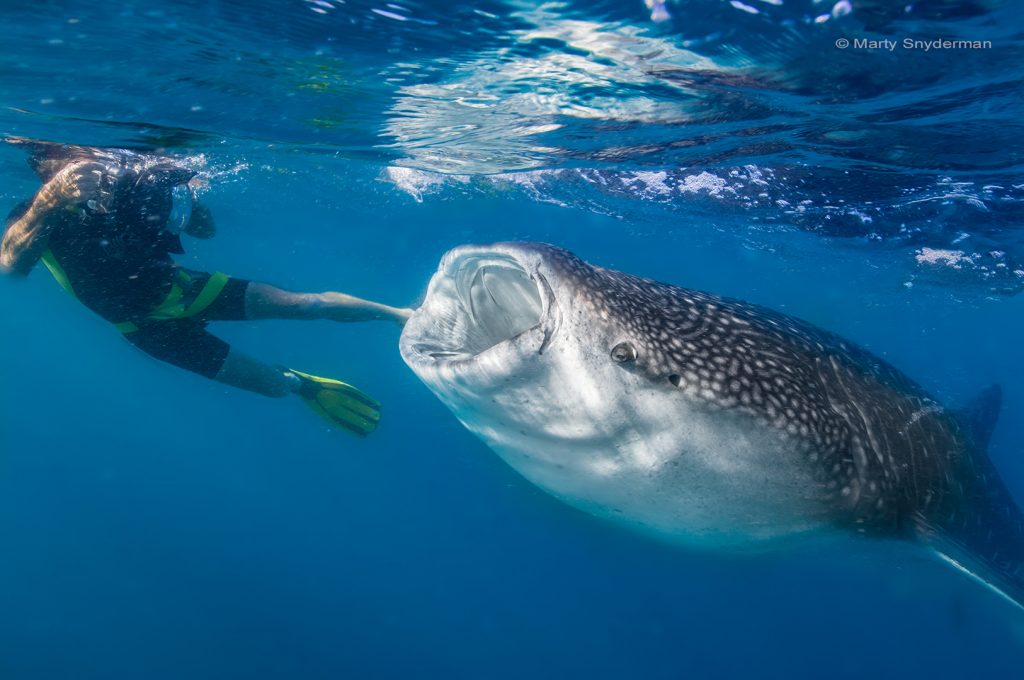
Keep in mind, big subjects are often impossible to light with a strobe. So, you are depending on sunlight to help you expose and reveal detail in your subject. The closer to the surface you work, the more help you can get from sunlight in terms or revealing colors and details in your subject.
While it does not always work, there are times when waiting close to the surface proves more beneficial than trying to outswim Mr. Big as animals that head into deeper water sometimes circle back into the shallows.
Keep the Sun at Your Back When You Can
Whether near the surface or at depth, it is usually helpful to work with the sun at your back, thus having the sun illuminate your subject. Once again, while you can’t control where a big animal will swim, keeping in mind the fact that you want the sun to light your subject from a favorable direction, as I was able to do when photographing this whale shark, can help you get into the best possible position given the scenario you are working in.
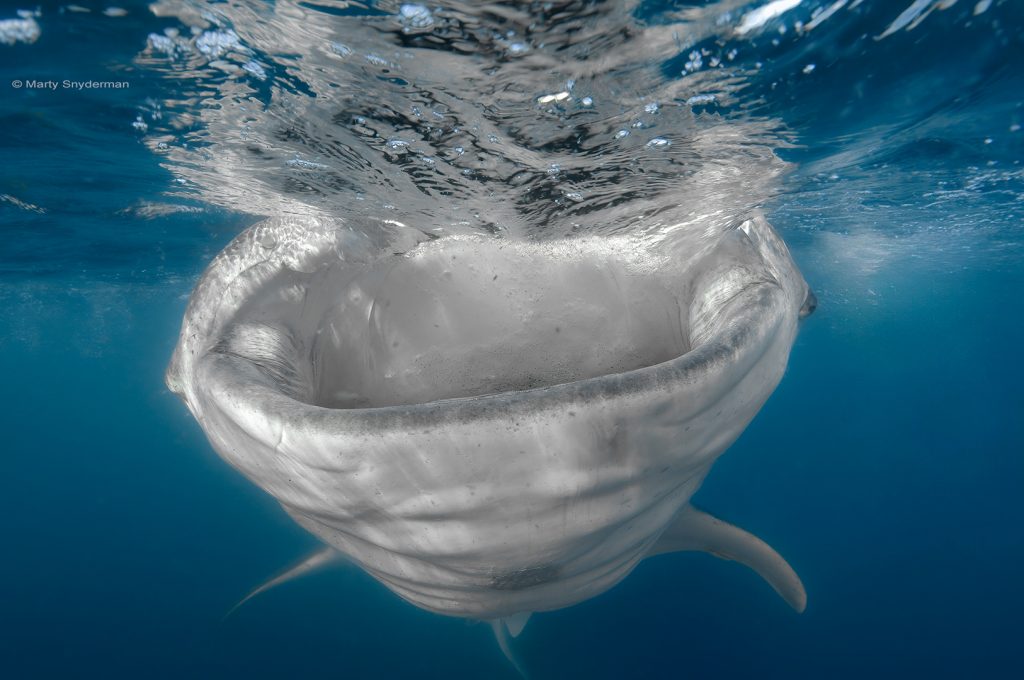
Without the assistance provided by strobe light to illuminate the shaded side of your subject, shooting into the sun often leads to poor contrast, lack of detail, and disappointment. That was the scenario when I made this image of a pod of Atlantic spotted dolphins. Live and learn!
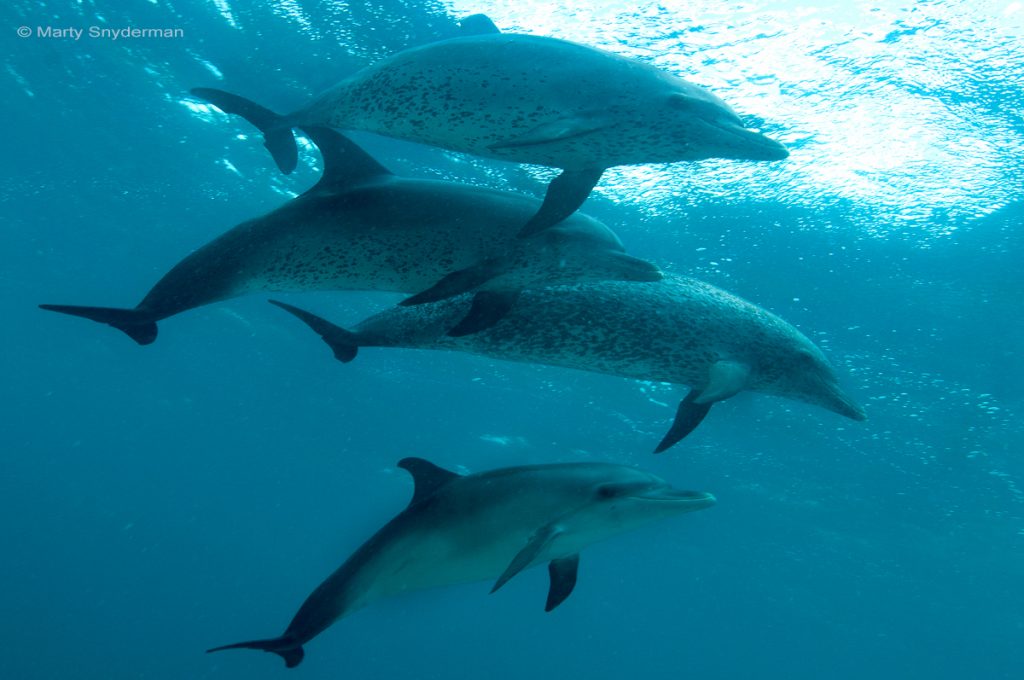
Including a diver in an image adds Perspective, Connection, and Drama!
While you might be familiar with how big a particular animal is, it is likely that someone you share your images with will have no idea about Mr. Big’s size. Including a diver in an image adds perspective, allowing viewers to instinctively gain insight by noting how Mr. Big’s size, in this case a large manta ray, compares to the diver’s size.
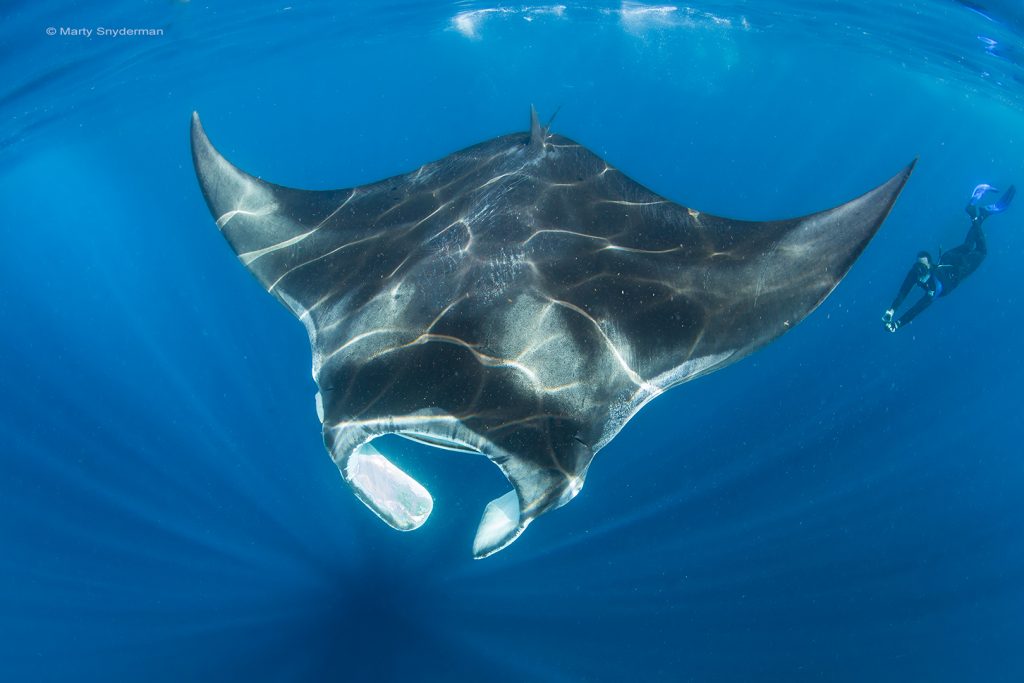
In addition, including a diver often creates a strong personal connection for viewers as they sometimes see emotion in the diver’s face or they vicariously become the diver, thus subconsciously putting themselves in the shot. The feeling “Wow! That could be me” almost always guarantees a highly favorable reaction to a photograph of Mr. Big.
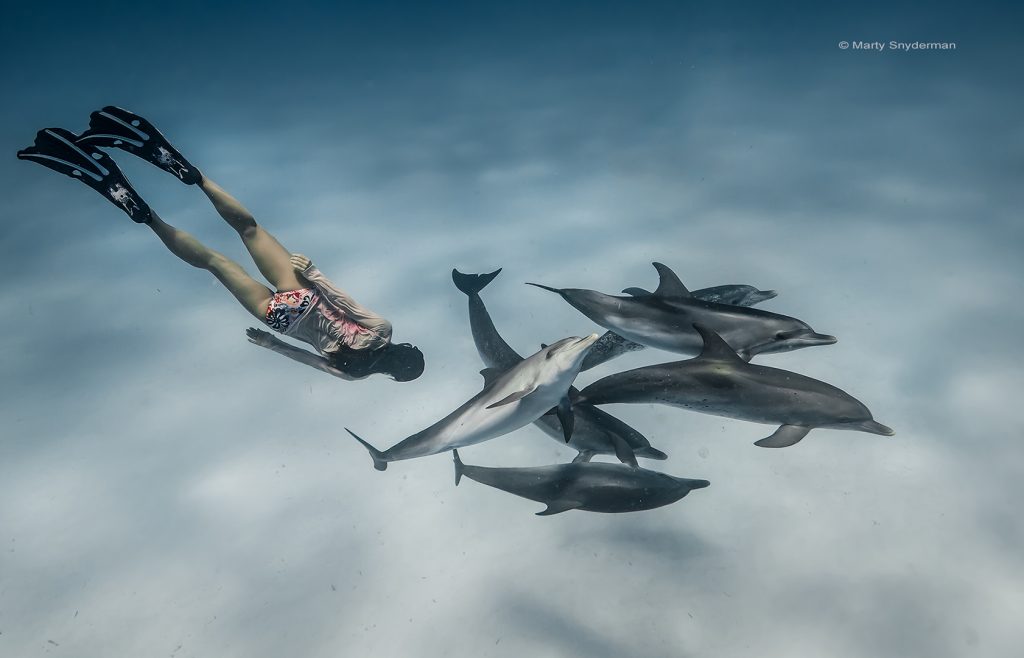
Use the Setting to Your Advantage
Similar to including a diver in a photograph to add perspective, elements that reveal the environment Mr. Big inhabits often provides valuable context and visual appeal. So, instead of always going for the perfect portrait of Mr. Big in blue water, consider adding elements that instantly tell a viewer your subject was photographed in a kelp forest, reef community, on or near a wreck etc.
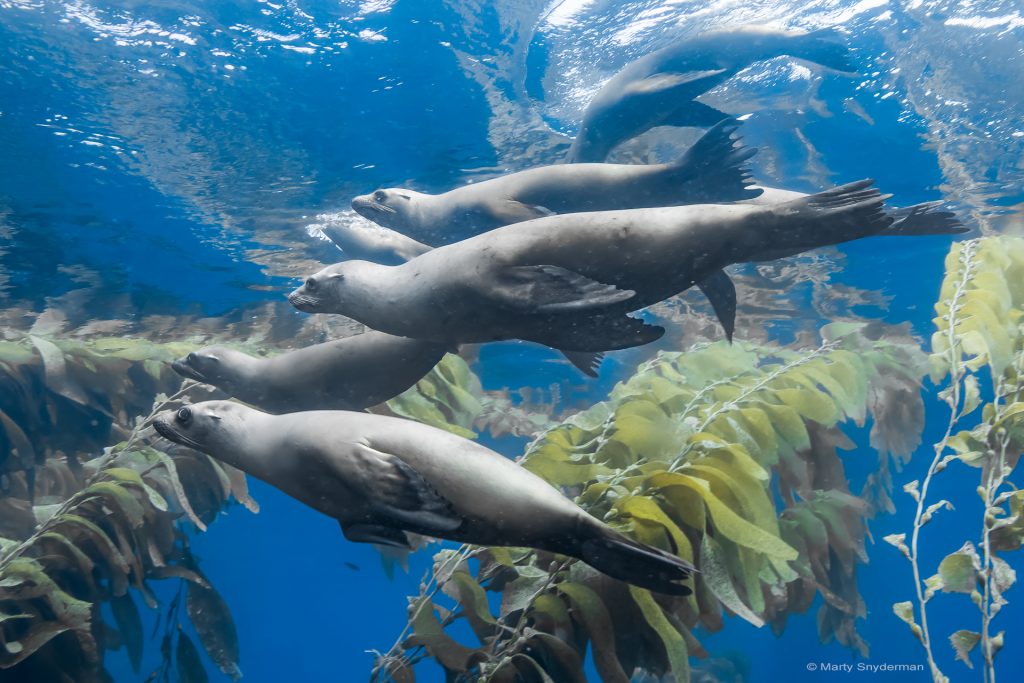
Images composed for that purpose might require the use of a wider lens than you would use for a tight portrait, thus making your subject a little smaller in your frame. But adding that context to a photograph sometimes adds significant impact.
Once again, planning your shot or recognizing and taking advantage of an opportunity can add considerable visual appeal to photographs of Mr. Big.
Don’t Overlook Silhouettes
Like any compelling image, strong silhouettes don’t just happen. To make an attention-grabbing silhouette, look for a subject that has an interesting shape and that stands out in sharp contrast to the background. Finding that contrast usually means shooting at a strong upward angle while in relatively shallow water.
Compose, focus, use a shutter speed of 1/125th of a second or faster, and properly expose the water that surrounds your subject. In a nutshell, if the water is properly exposed and your subject is much darker, you have a good chance to create a strong silhouette.
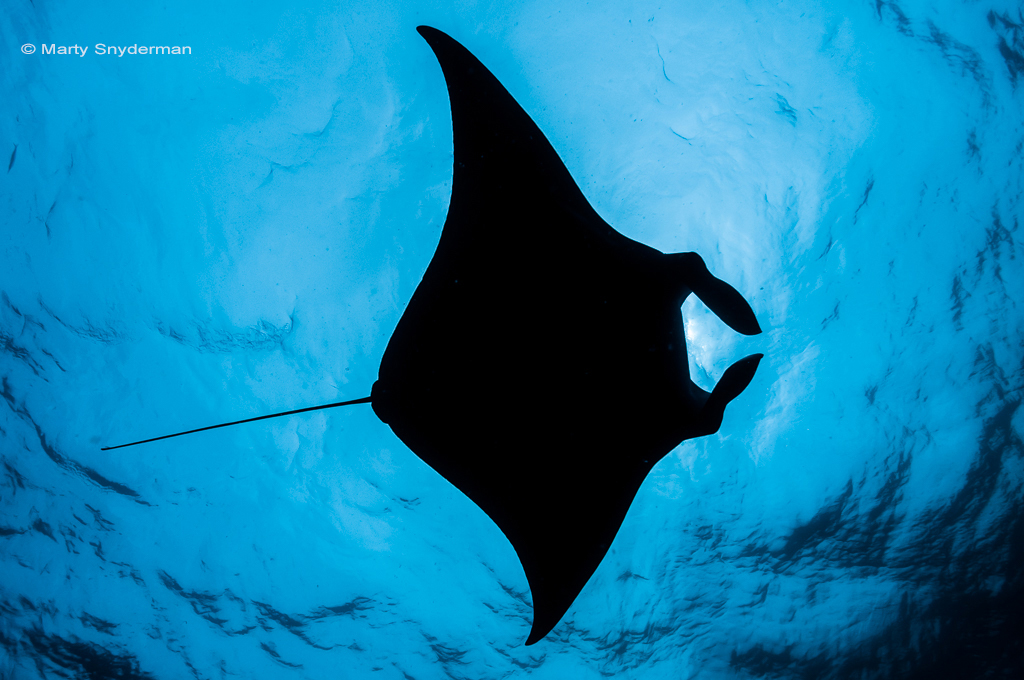
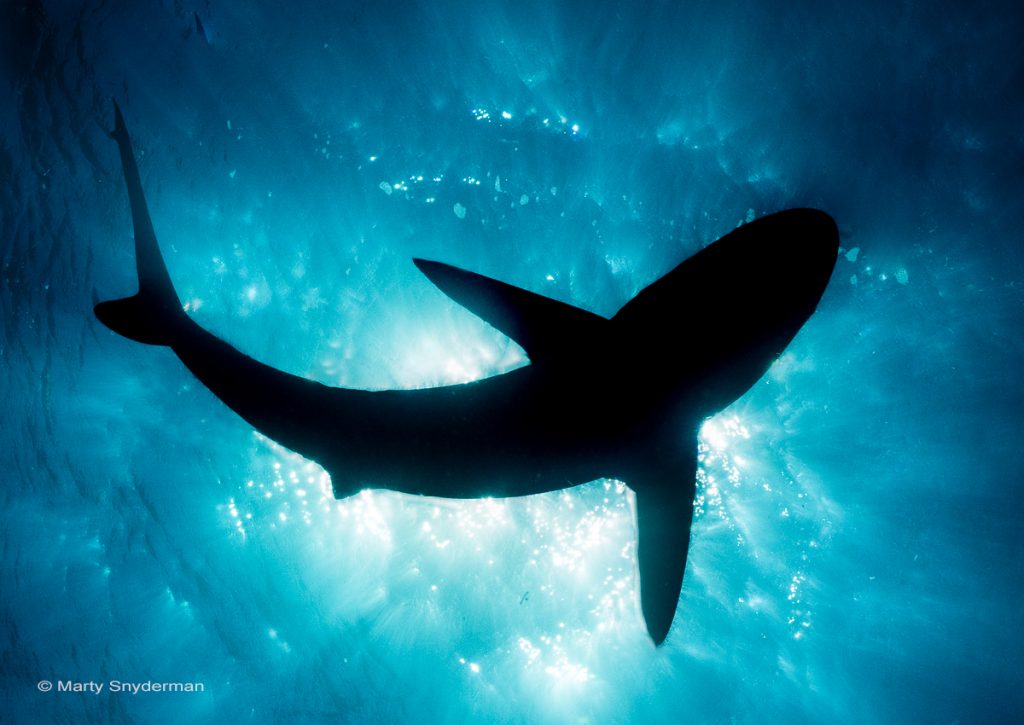
If the sun is in your frame, it is often a good idea to block the sun with your subject, as done in this silhouette of a Caribbean reef shark.
Adding a silhouetted diver can add drama along with size perspective in silhouettes of Mr. Big.

Behavioral Images are NOT just for Macro Subjects
When first diving around large marine creatures, it is easy to overlook opportunities to capture shots that share a variety of behaviors. Making a portrait often seems challenging enough and it can be as overwhelming as it is awe inspiring just being close to big animals in the wild. That can make it difficult to look for details.
But with some experience, you are likely to see that, like many smaller creatures, there are opportunities to capture some fascinating aspects of big animal behavior. Examples include images of a humpback whale swimming with its mother,
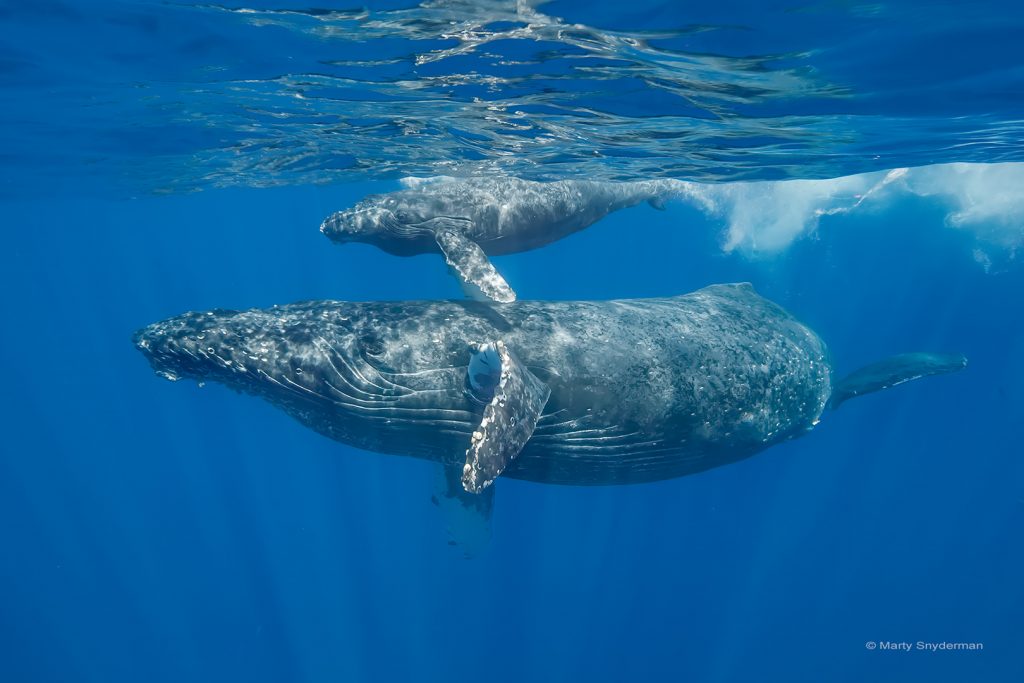
a nursing manatee calf,
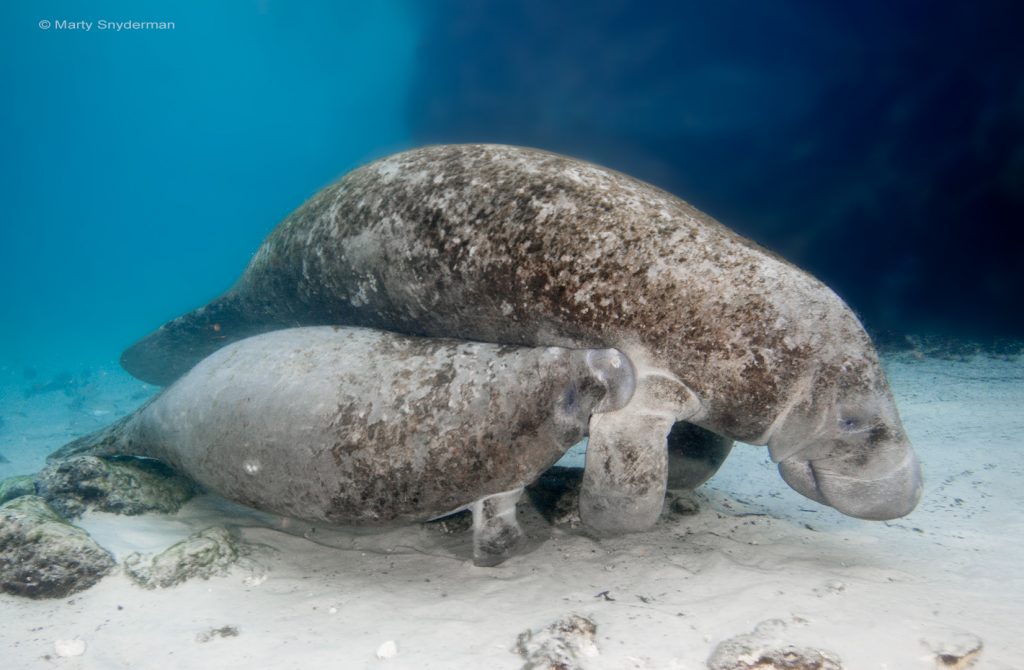
a manta ray feeding, and
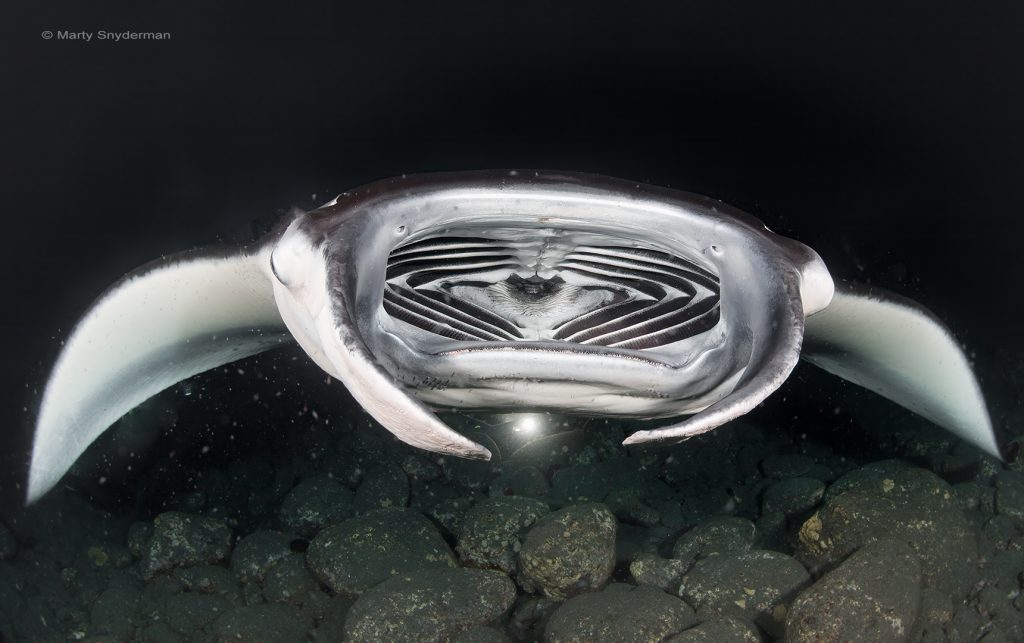
a rainbow runner with a gray reef shark.
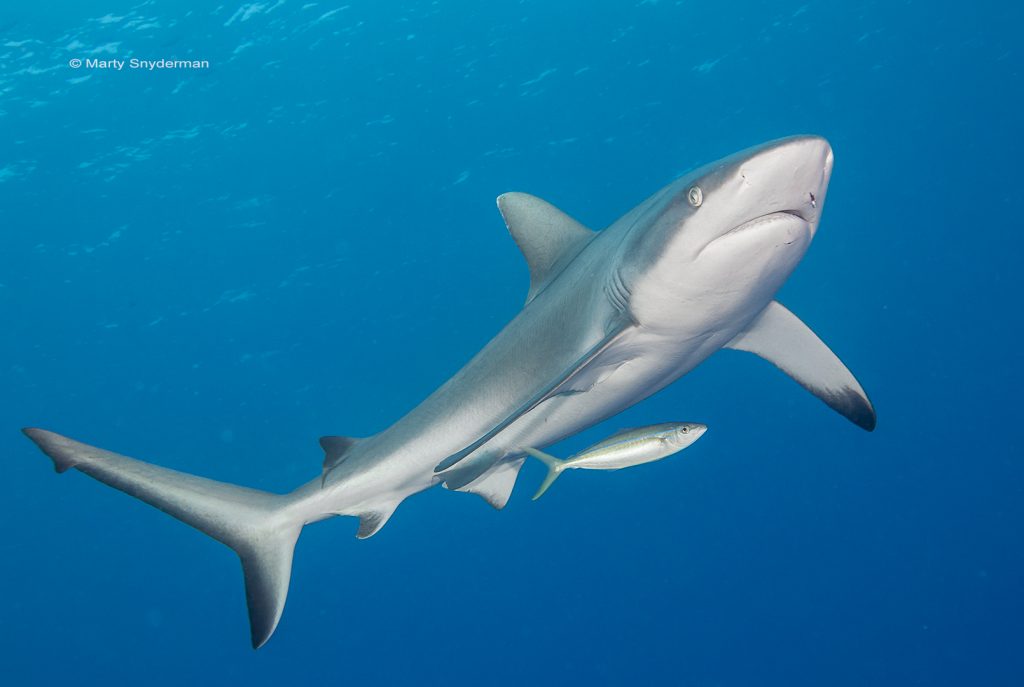
Capturing behavioral images sometimes means using a lens other than a very wide-angle lens or using a zoom lens set to a relatively narrow angle-of-view.
Which behaviors you have an opportunity to capture and what camera system set up you want to use depends on the specific diving scenario and behavior you hope to document. My point is to encourage you to look for your opportunities to capture behavior when an opportunity presents itself as strong behavioral images can elevate your work.
Photograph Faces When You Can
After having numerous opportunities to make portraits of Mr. Big, consider trying to get a tight shot of your subject’s face. While you can’t always get close enough to make a facial shot, there are times when that opportunity avails itself.
Here you see the faces of a sixgill shark:
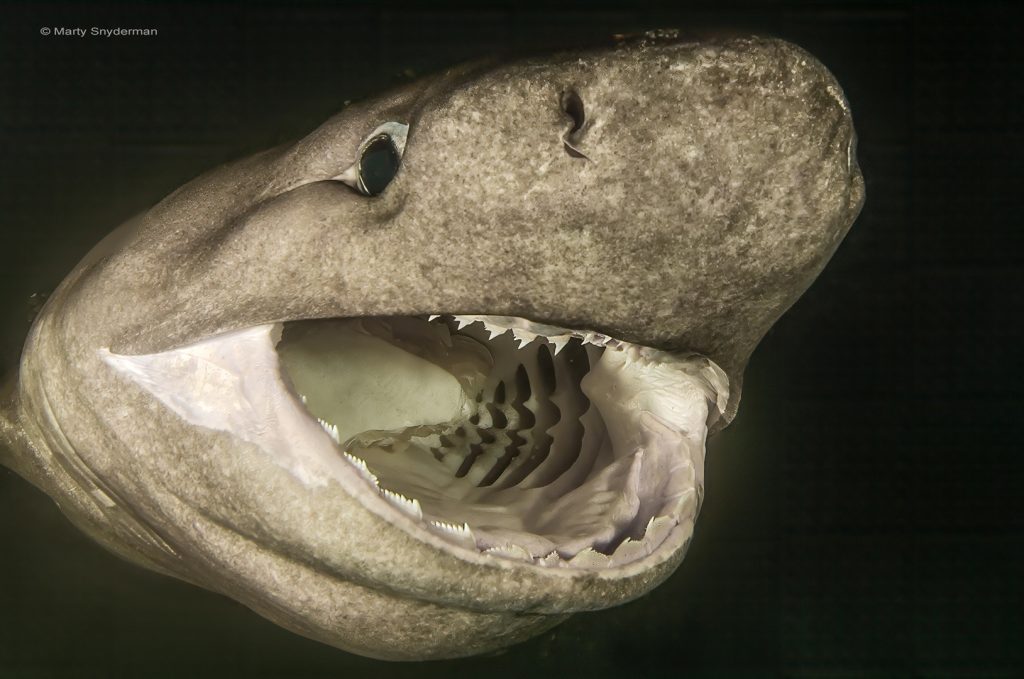
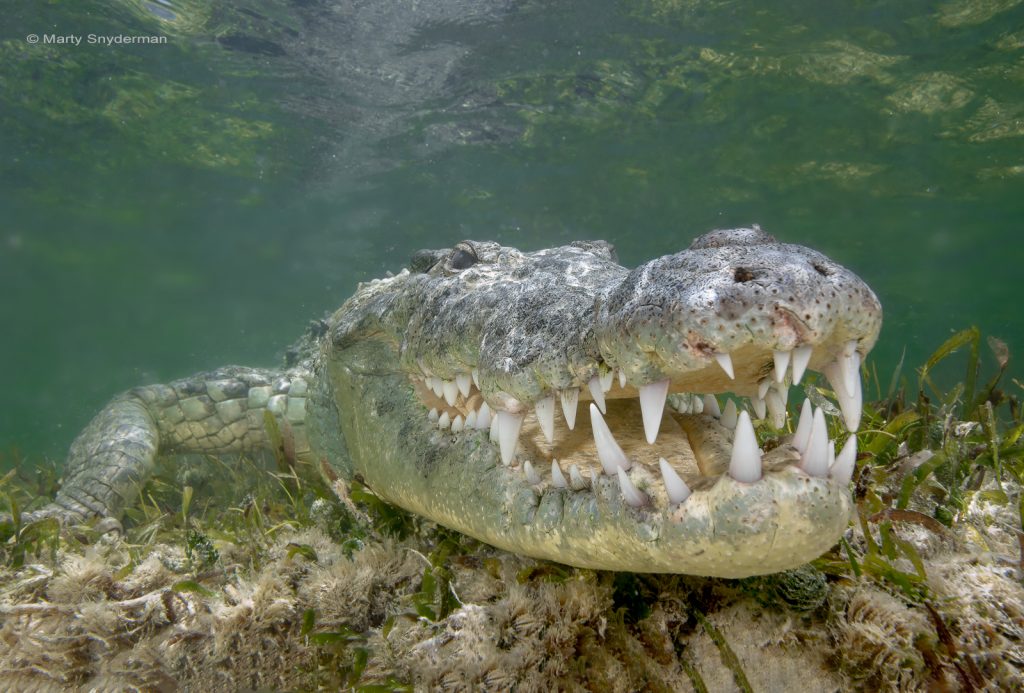
And an American crocodile.
Images of the faces of sharks, sea lions, manatees, manta rays etc. are crowd pleasers. Like other compelling photographs, nice images of the face of big animals don’t just happen. You need the right opportunity. Then you need to be willing to dedicate effort to getting your shot.
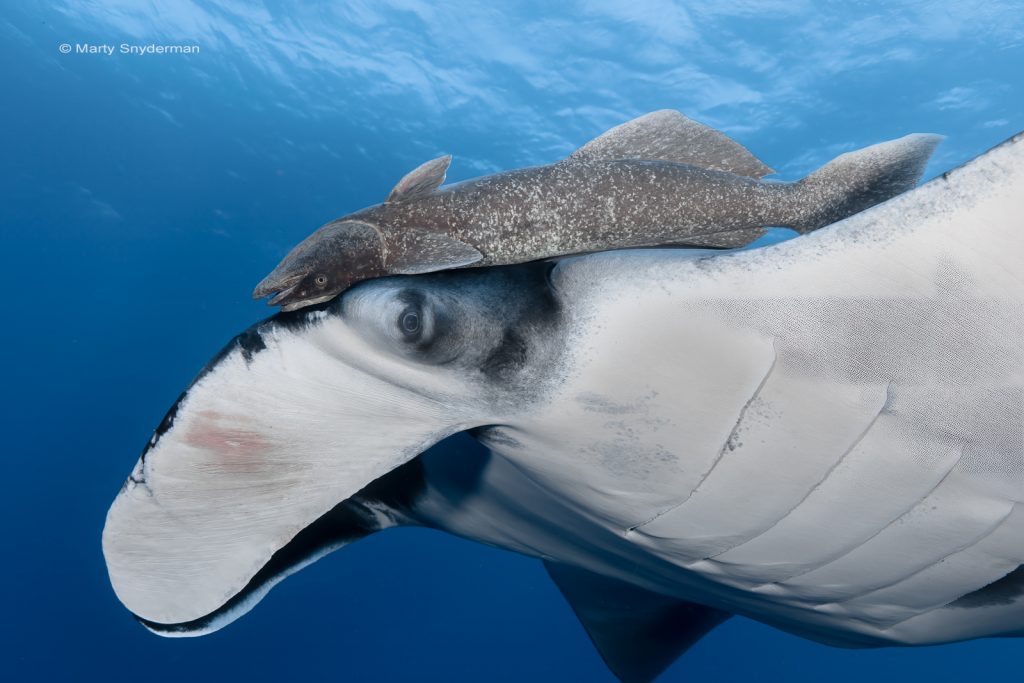
Give Mr. Big Some Headroom
Giving an animal headroom almost always helps to create a more pleasing photograph than one in which your subject’s head is butted right up against the edge of your frame. I think you will see my point by noting the headroom in this photograph of a humpback whale:
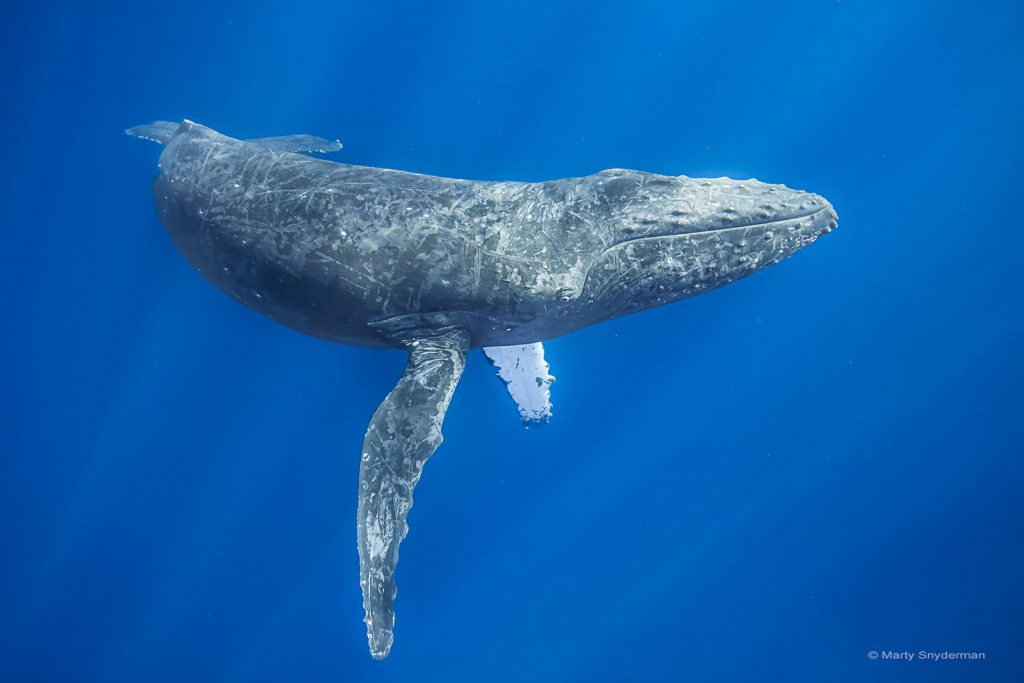
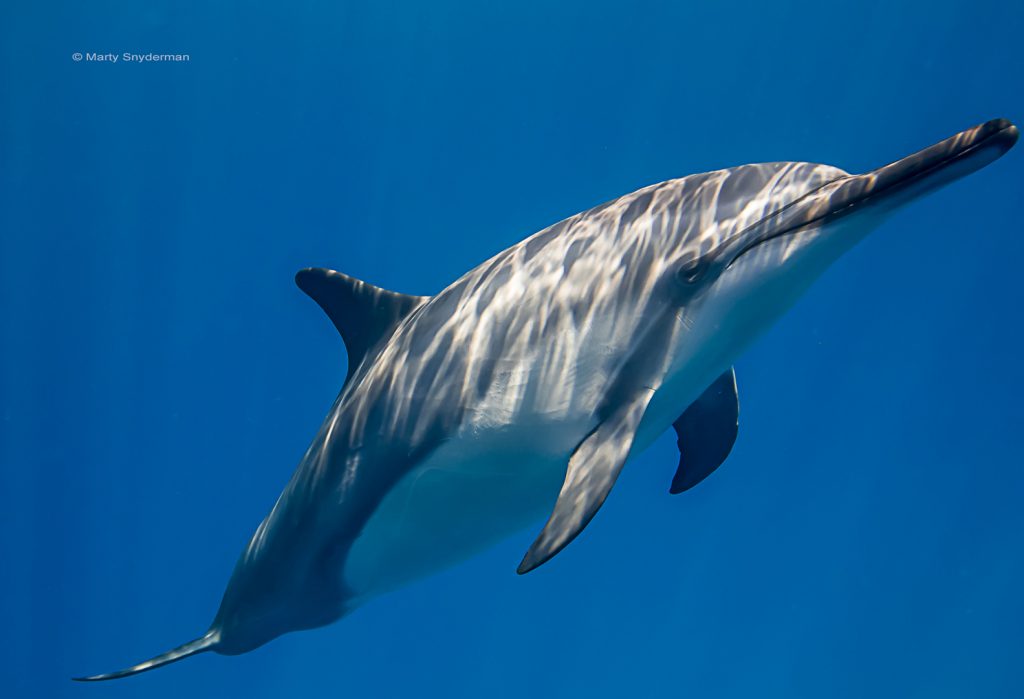
And the lack of headroom in this picture of a spinner dolphin.
Be Careful When Using a Zoom Lens
In days gone by, zoom lenses were sometimes thought of as “poor man’s lenses”, meaning that while more affordable than prime lenses, they were of inferior quality. While you can still make the case that prime lenses are superior to zoom lenses, the difference is essentially negligible for most underwater shooters. As a result, zoom lenses are commonly found in our equipment bags.
These days some photographers get lazy when using a zoom lens. Instead of trying to reduce the distance between their lens and subject by getting closer to their subject, they try to “close the gap” by zooming their lens.
Shooting through less water yields crisper images and more vivid colors. So, the mantra, “zoom with your fins, not your lens” continues to be sage advice.
Good use of a zoom lens occurs when you get as close to your subject as you reasonably can and then zoom the lens to compose a compelling frame.
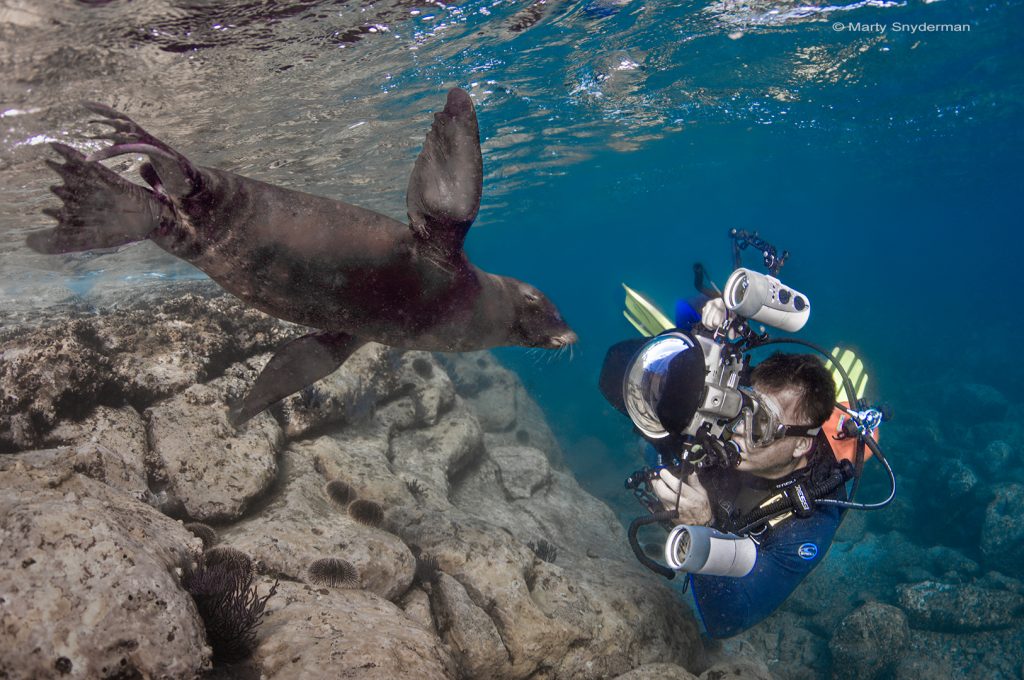
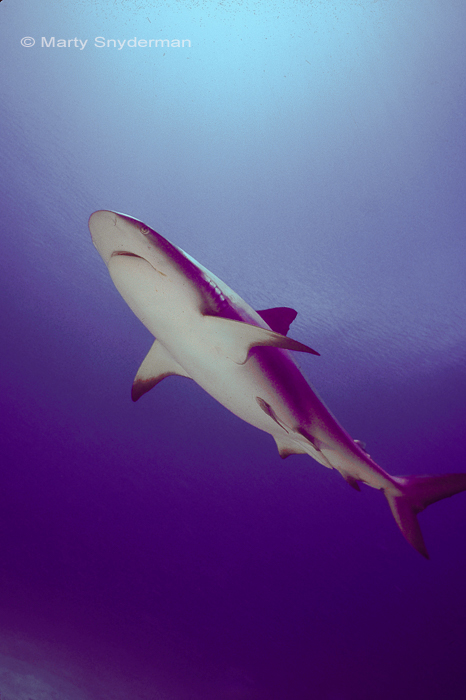
Bad technique involves zooming a lens to try to fill your frame with your subject when shooting from too far away. A lack of contrast between the subject and its surroundings and a subject with “funky colors” even after applying post-capture software such as Photoshop is often the disappointing result.
Pay Heed to the Advice of Dive Guides and Experts
Few things are as helpful to underwater photographers as local knowledge. Dive guides and local experts routinely spend days on end locating, observing, and working with the animals they help us find. Listen closely and pay heed to their advice.
In my experience dive guides are often the unsung heroes of our craft. They share their expertise and help get us into a good shooting position, and we often receive all the credit for the images!
Enjoy What You Are Witnessing
As with all types of underwater photography, it is worthwhile to remember that we are very fortunate to witness the animals and behaviors we see when we dive. Be grateful and do not allow any lack of photographic success to detract from your experience and awareness of how fortunate we are to dive with Mr. Big, whoever and wherever that might be.

Dive Safety Through Education
NAUI Worldwide
🌎 Nonprofit Dive Training & Certifying Agency.🤿




